Love him or loathe him, Damien Hirst knows a thing or two about shock value. Since bulldozing his way onto the world’s stage as part of the YBAs in the early 1990s, the artist has raised more than a few eyebrows with his provocative oeuvre. During his polarising career, he’s encased a cast of a human skull in diamonds, filled Tate Modern with thousands of butterflies, and most recently, sparked debate over the value of art with his NFT project, The Currency. I shouldn’t have been surprised, then, to find a larger-than-life-size anatomical model – all muscle and veins, cranium gone awol – guarding the entrance to Château La Coste, a cultured wine estate (and part of hotel Villa La Coste‘s grounds) where Hirst’s latest exhibition The Light That Shines has just opened its doors.

Damien Hirst, Heaven (2008)
On the surface, a wine estate in the Provençal countryside may not seem like the obvious choice for such contemporary statements. But then, Château La Coste is no ordinary estate. For starters, it’s the size of Monaco. But in lieu of superyachts, you have super-builds: it feels like Château La Coste flipped through the pages of Architectural Digest and said ‘I’ll have that and that…’. Across the estate’s 500 acres, you’ll find Frank Gehry’s relocated Serpentine Pavilion, Jenga-esque in its seemingly precarious stacking of timber beams; Oscar Niemeyer’s curved, glass-walled gallery; Richard Roger’s gravity-defying cantilever; Renzo Piano’s semi-sunken, sail-topped hall, and a number of Tadao Ando-designed spaces, which range from an all-concrete cafè-cum-art-centre, to a 16th-century structure turned Modernist chapel. Hell, even the wine cellar is by Jean Nouvel.
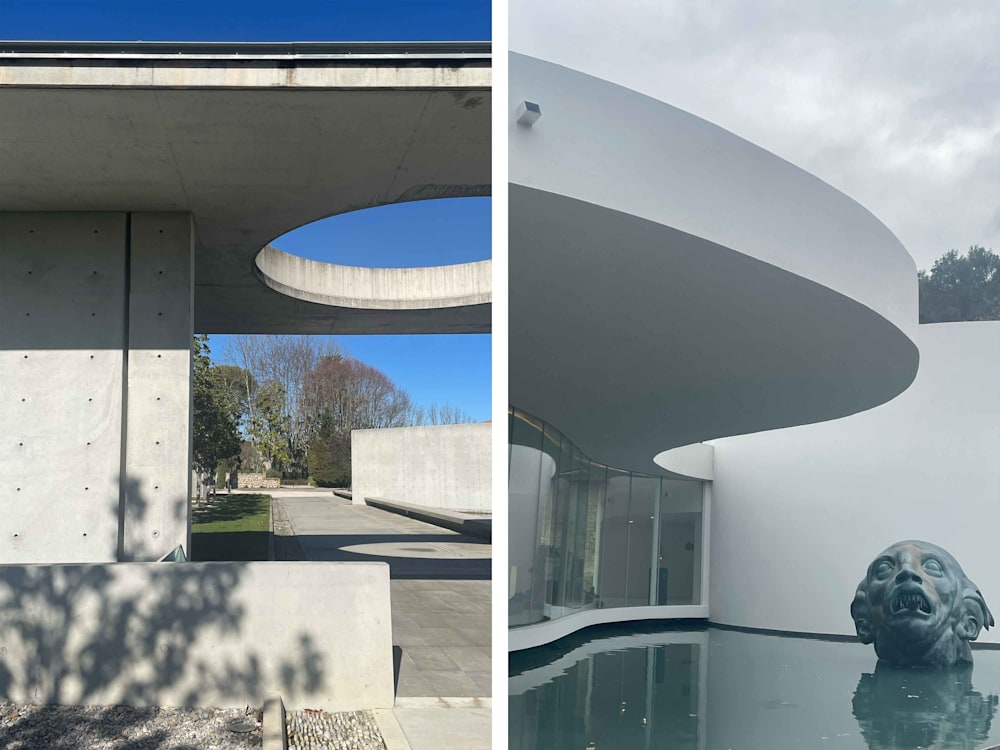
Tadao Ando, Centre d’Art (2011) | Damien Hirst, Head of a Demon, Excavated 1932 (Exhibition enlargement) (2015)
While Hirst is the first artist to take over all five of the estate’s gallery spaces, there’s a vast permanent collection of large- and small-scale works, which include the likes of Louise Bourgeois (who’s striking Maman spider crouches on water at the Château’s entrance), Ai Wei Wei, Tracey Emin, and Yoko Ono, to name a few. These masterpieces comprise the personal inventory of owner Paddy McKillen, a Belfast-born entrepreneur and art-lover, who considers himself less of a ‘collector’ and more as an enthusiastic facilitator of his many artist pals.

Damien Hirst, Cosmos Paintings (2021)
‘This magnificent show has been an idea for many years,’ says McKillen, a longtime friend of Hirst, ‘amid laughs and giggles, chats and cups of tea, great ideas evolved as they do when Damien is his playful self.’ And playful it is. In the Old Wine Storehouse, bronze Meteorites and Satellites sculptures act as theatrical props, while the Pollock-esque Cosmos Paintings – inspired by long-exposure images from Hubble Space Telescope – speak to the anarchy of the universe, like celestial terrazzo in their riot of flecks and splatters. It’s not the artist’s first interplanetary affair, either. Art aficionados may remember the time he sent one of his signature dot paintings to Mars aboard the Beagle 2 space probe back in 2003. Such is Hirst’s – quite literally boundless – ambition.
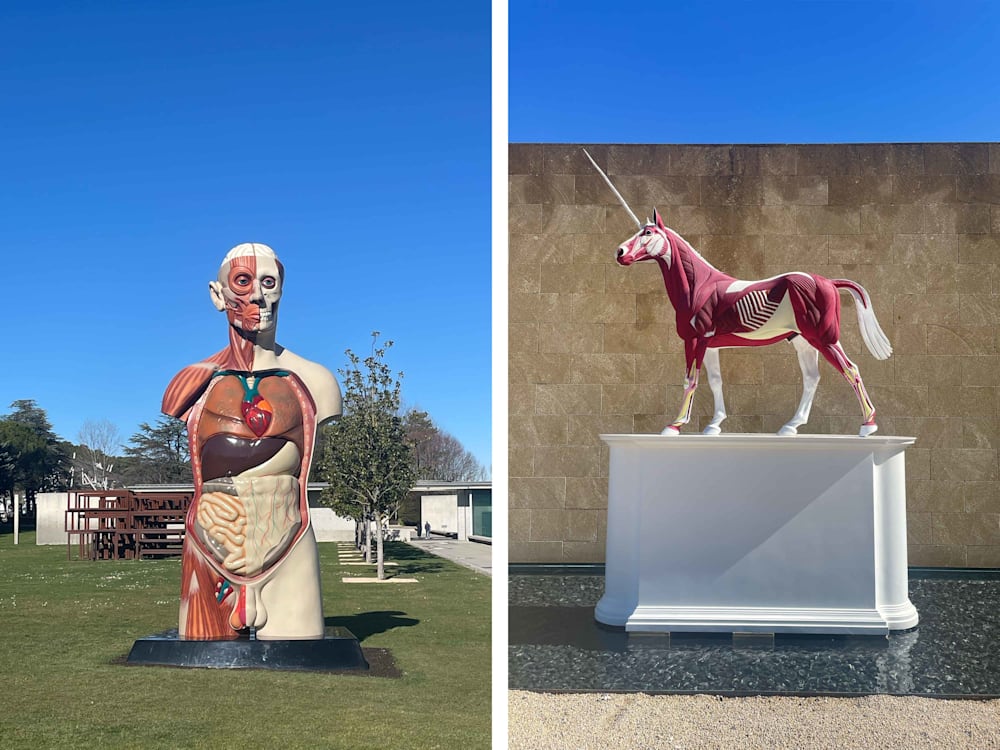
Damien Hirst, Temple (2008) | Damien Hirst, Myth (2010)
Otherworldly themes continue further inside the Château’s folly-flanked forest, where works from his 2017 Venice Biennial show Treasures from the Wreck of the Unbelievable, fill Niemeyer’s auditorium. The series tells the story of a Byzantine shipwreck found at the depths of the Indian Ocean, and the ancient treasures salvaged from its wreckage. Only, the story is an elaborate fiction, and the treasures – which include everything from traditional African masks to Hellenic sculptures of sea monsters, gorgons and more – are not ancient at all. On closer inspection, these objects reveal themselves to be firmly contemporary; a comment on myth, storytelling and truth, and a typically Hirst-ian prank. As I near one particular statue, seemingly time-worn in its green oxidation, I realise what I’m looking at is but a barnacle-encrusted Donald Duck.
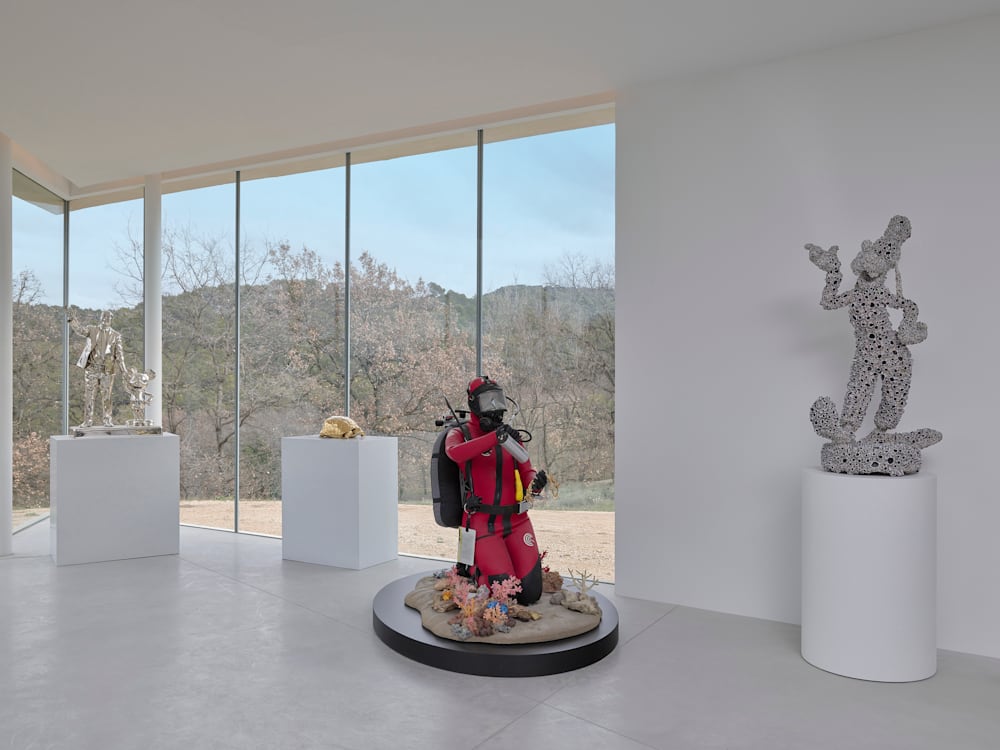
Damien Hirst, Treasures from the Wreck of the Unbelievable (2017)
Occupying one of the estate’s highest points, Richard Roger’s Drawing Gallery is an incredible feat of engineering, jutting 27 metres out from the hillside and encased in vivid orange caging. Here, Hirst pays homage to bygone empresses with a series of kaleidoscopic red and black butterfly prints, each intricately outlined with gold that recall’s the Japanese practice of kintsugi. Back down on earth, the Bastide Gallery plays host to his previously unseen Secret Gardens Paintings, which look almost AI-generated in their striking photorealism. No show of this scale would be complete, of course, without Hirst’s iconic formaldehyde pieces – the OG artworks that propelled him to stardom after Charles Saatchi’s landmark Sensation exhibition – and Renzo Piano’s pavilion makes a fine spot for them, it’s floor-to-ceiling glass walls echoed by the sculptures’ clinical vitrines.
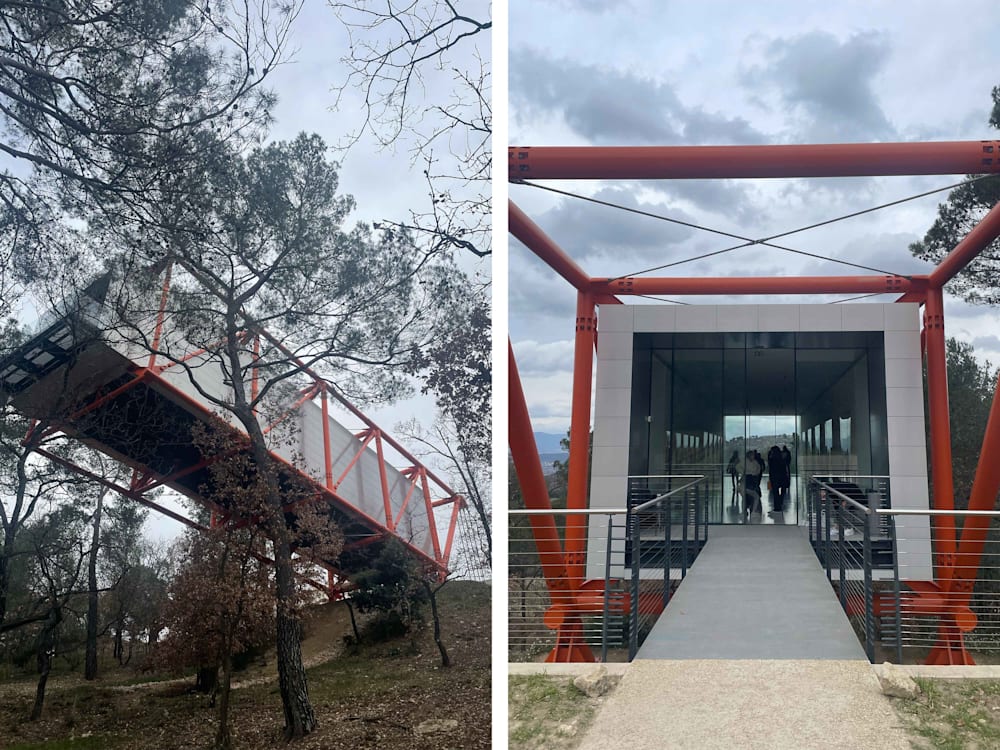
Richard Rogers, Galerie d’exposition (2021)
There’s a lot to see, so if a short pause on one of Andò’s origami benches doesn’t cut it (rumour has it that they were originally built as bus stops for Marseille), you might want to pencil-in a spot of R ‘n’ R in the estate’s reverie-inducing luxury hotel, Villa La Coste. Here, you can continue your arts education in a bathrobe and slippers (memory foam ones, at that) as you tuck into a breakfast of fluffy French pastries next to a Takashi Murakami, leaf leisurely through books on Le Corbusier and Cy Twombly, snooze under an Etel Adnan watercolour, or sample the estate’s rosè from your terrace as the sun sets on the Richard Serra below. No biggie.
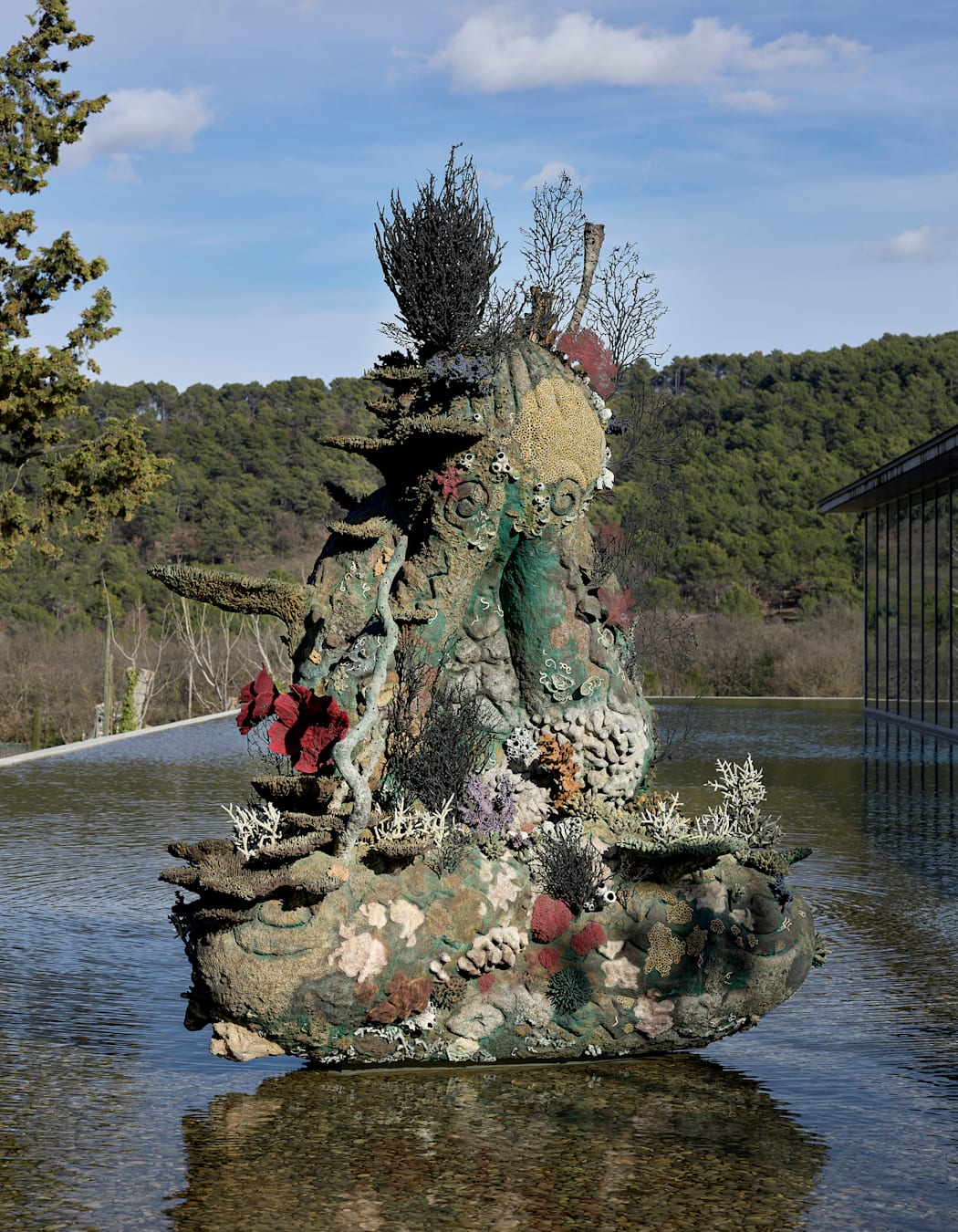
Damien Hirst, The Monk (2014)
For centuries artists have been drawn to Provence, in part for its honey-hued villages and rolling pastoral plains, but also because of its sharply defining light. Matisse found clarity in Nice’s crystalline, limpid lustre; Van Gogh found bursts of relief under Arles’ yellow sun (pre ear-lobbing, that is); and it was a distinctly Aixois glow which lit Cézanne’s path to abstraction. At Château La Coste, that light continues to shine on Hirst and his illustrious career, one still running on rebellion and bold ambition.
Damien Hirst: The Light That Shines is on from 2 March to 23 June 2024 at Château la Coste, Provence.
Find your own muse at Villa La Coste or explore our complete collection of hotels in Provence.
Header image Hylonome (2011), by Damien Hirst; photography by Prudence Cuming Associates Ltd and Stephanie Gavan

